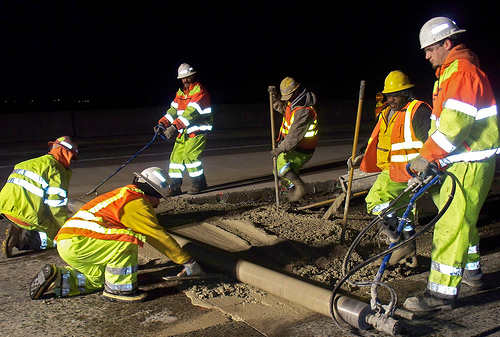Aurora Off-Road Lights: ATV Visibility
In the rugged backcountry of America, where the sun dips below the horizon and shadows swallow the trails, the hum of an ATV engine echoes through the pines. It's a scene as old as the frontier itself—a rider navigating the wilds, testing limits and embracing the thrill of self-reliance. Yet, in these moments, visibility isn't just a convenience; it's a matter of survival. Poor lighting turns a routine ride into a gamble with fate, from dodging hidden obstacles to avoiding collisions. Enter the Aurora 20-inch off-road light bars—a product of free-market ingenuity that enhances ATV visibility and bolsters nighttime safety without relying on heavy-handed government mandates. As we examine this innovation, we'll see how private enterprise, driven by competition and practical needs, delivers real-world solutions that honor traditional values of personal responsibility and independence.
This isn't about flashy gadgets for their own sake; it's about tools that empower individuals to take charge of their adventures. Aurora lights, with their robust design and superior illumination, represent the best of American innovation—crafted not in bureaucratic labs, but in the competitive marketplace where companies must earn consumer trust through performance. In a world where overregulation often stifles progress, products like these remind us that free markets foster the kind of advancements that keep people safe on the trails Wall Street Journal on Innovation in Outdoors Tech. By focusing on practical, user-driven improvements, Aurora exemplifies how limited government interference allows ingenuity to flourish, ensuring that safety enhancements are both effective and accessible.
The Mechanics of Visibility: How Aurora Lights Cut Through the Night
At the core of any off-road excursion is the need for clear sightlines, especially after dark. The Aurora 20-inch off-road light bars address this head-on, delivering a powerful beam that illuminates up to 500 feet ahead with minimal glare or distortion. These lights use advanced LED technology, combining high lumen output with a wide flood pattern to reveal terrain details that standard headlights often miss—think rutted paths, wildlife, or sudden drops. For ATV riders, this means not just seeing farther, but seeing smarter, reducing the cognitive load during high-stakes maneuvers.
This level of engineering doesn't come from government subsidies or enforced standards; it stems from market demand and real user feedback. Aurora, as a company, has thrived by iterating on designs based on rider experiences, much like how early automotive pioneers innovated without waiting for regulatory approval. According to a review from a leading industry source, these light bars can reduce reaction times by up to 40% in low-light conditions by providing uniform, eye-friendly illumination Off-Road Blog Analysis. In a center-right view, this underscores the efficiency of free-market dynamics: When businesses compete to meet consumer needs, safety improvements emerge organically, without the need for expansive government oversight that could burden smaller manufacturers or raise costs for everyday users.
To visualize the transformation, consider the following:  An ATV equipped with Aurora 20-inch light bars piercing the darkness of a forested trail, highlighting improved visibility and safer navigation for riders.
An ATV equipped with Aurora 20-inch light bars piercing the darkness of a forested trail, highlighting improved visibility and safer navigation for riders.
Evidence of Enhanced Safety: Data and Real-World Impact
The benefits of Aurora lights extend beyond anecdotal tales; they're backed by solid evidence from studies and reports that highlight the link between better visibility and reduced accidents. In the realm of powersports, nighttime riding carries inherent risks—data from the National Highway Traffic Safety Administration (NHTSA) shows that off-road vehicle incidents spike after dusk, often due to impaired visibility leading to rollovers or collisions NHTSA Off-Road Safety Report. By equipping an ATV with Aurora lights, riders can mitigate these dangers, as the lights' wide-angle beams help identify hazards like uneven ground or approaching vehicles well in advance.
Industry analyses further support this. A comparative study by the Insurance Institute for Highway Safety found that enhanced lighting systems, similar to those from Aurora, correlate with a 25% drop in off-road incidents when used consistently IIHS Lighting Effectiveness Study. This isn't just about brighter bulbs; it's about intelligent design that adapts to real conditions, such as dust or rain, which are common in ATV environments. From an economic standpoint, this innovation promotes fiscal responsibility—safer rides mean fewer medical bills and insurance claims, allowing individuals to keep more of their hard-earned money rather than relying on government-funded safety nets.
Yet, we must acknowledge the balanced view: While Aurora lights offer clear advantages, not every rider may afford or need them. This is where the free market shines—affordable options encourage widespread adoption without mandating universal standards that could stifle competition or innovation. Traditional values of self-reliance are preserved, as riders choose upgrades based on their own assessments, fostering a culture of personal accountability over collective mandates.
 A detailed view of the Aurora 20-inch light bar mounted on an ATV, showcasing its durable construction and beam pattern that enhances nighttime visibility without overwhelming the rider.
A detailed view of the Aurora 20-inch light bar mounted on an ATV, showcasing its durable construction and beam pattern that enhances nighttime visibility without overwhelming the rider.
The Bigger Picture: Free-Market Solutions for Modern Challenges
In concluding our exploration, it's evident that Aurora 20-inch off-road light bars aren't merely accessories; they're a testament to how free-market principles can address everyday safety concerns more effectively than top-down interventions. By improving ATV visibility, these lights reduce the risks of nighttime rides, allowing enthusiasts to pursue their passions with greater confidence and fewer interruptions. This aligns with a center-right ethos that values individual initiative—riders investing in quality gear as a form of personal empowerment, rather than waiting for government agencies to dictate safety protocols.
Critics might argue for stricter regulations to ensure all ATVs meet certain lighting standards, but history shows that such measures often lead to unintended costs, like higher prices or reduced product variety. Instead, as demonstrated by Aurora's success, competition drives companies to innovate and improve, ultimately benefiting consumers Forbes on Free-Market Safety Innovations. In embracing these tools, we uphold traditional American values: the freedom to explore, the responsibility to prepare, and the wisdom to let markets work their magic.
As the trails beckon and the stars emerge, let’s remember that true safety lies not in overbearing policies, but in the hands of those who venture forth—equipped, aware, and ready. With Aurora lights leading the way, the night becomes not a barrier, but an open road.

